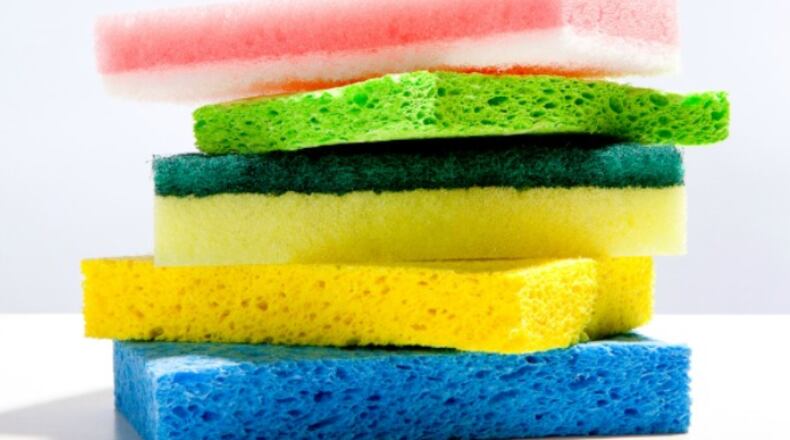A lot of folks think of the bathroom as the filthiest place in the house, but according to experts, the kitchen is a hotbed of germs.
» PHOTOS: The 10 germiest items in your home
In fact, pathogens such as E. coli, Salmonella, Listeria and more are likely to be all over your kitchen and could make you and your loves ones very ill, according to Cheryl Luptowski, a home safety expert with the National Sanitation Foundation.
Here are the 10 filthiest areas and objects in your kitchen to scrub, wipe and disinfect:
Credit: Sean Gallup
Credit: Sean Gallup
Dishcloths and sponges
This might be a no-brainer, but according to new research from Drexel University scientists, sponges contain a grimy amount of bacteria (64 percent!)
"If you're using them to clean your counters and other areas, the bacteria's going to spread," study co-author Jennifer Quinlan told Time.
The research, published in “Food Production Trends” and the “Journal of Food Protection,” revealed evidence of disease-causing bacteria in kitchens of 100 Philadelphia homes.
Sink
The same Drexel University study showed a prominence of fecal bacteria in kitchens (44 percent) as well as E. coli (15 percent).
Those without disinfectant or sanitizer had higher bacterial counts overall, Time reported.
» RELATED: Georgia patients at risk from hospital-acquired infections
Fridge vegetable drawer
According to NSF's germ study in which microbiologists analyzed 14 common kitchen items for four different types of microorganisms, the refrigerator vegetable drawer often contains traces of salmonella, listeria, mold and yeast.
Fridge meat compartment
NSF microbiologists also found traces of salmonella, mold and yeast in the refrigerator meat compartments plus an E. coli presence.
You can blame the excess meat juice.
Rubber spatula
Due to improper cleaning, NSF researchers found rubber spatulas to be the second most germ-infested place in the kitchen.
Try hand washing your spatula in hot, soapy water or if you have a two-piece device, separate the handle from the head and clean both separately.
Popular bacteria on rubber spatulas include E. coli, yeast and mold.
» RELATED: Hand sanitizers: Do they help stop all germs?
Cutting board
Clean your cutting boards between uses thoroughly and replace when you notice deep cracks or grooves.
The Drexel study found 76 percent of the boards in the 100 homes they examined were worn with cracks, where bacteria love to hide.
Blender gasket
It’s easy to leave your blender dirty if you’re in a rush, but that’s not such a great idea.
In fact, your blender’s gasket (the rubber ring) is often host to salmonella, E. coli, mold and yeast, NSF scientists reported.
Can opener
If you don’t wash your can opener in the dishwasher, you may want to start, Luptowski said.
Can openers are privy to salmonella, E. coli, mold and yeast.
Rubber seals on food storage containers
Toting a healthy lunch in your to-go food container? Be sure to clean them thoroughly, because the rubber seals on the boxes can have high counts of yeast and mold, as well as salmonella.
Kitchen countertops
NSF researchers found 32 percent of kitchen countertops were contaminated with coliform bacteria such as E. coli.
Avoid wiping your countertops with dirty sponges and use kitchen disinfectant instead.
About the Author
Keep Reading
The Latest
Featured





